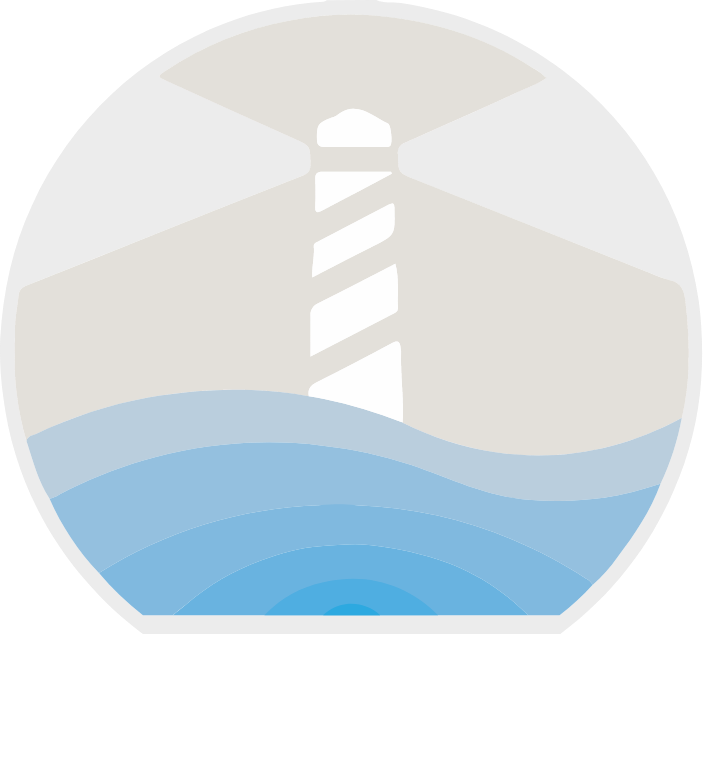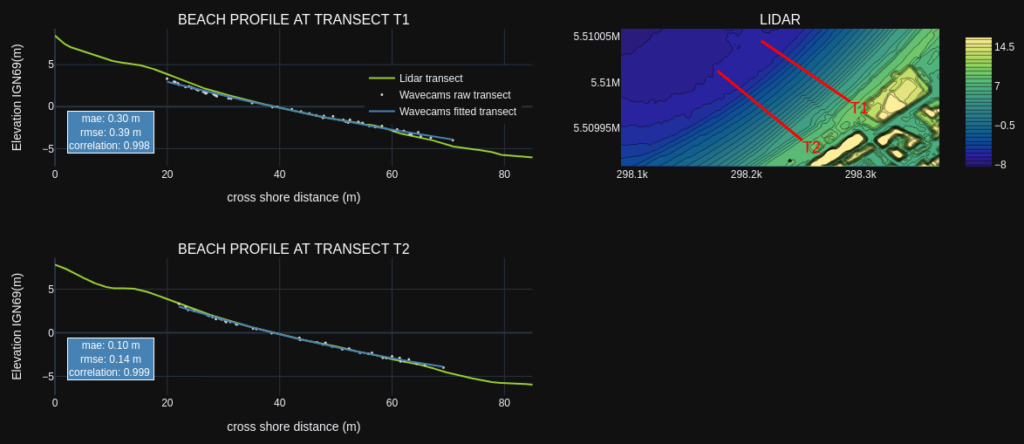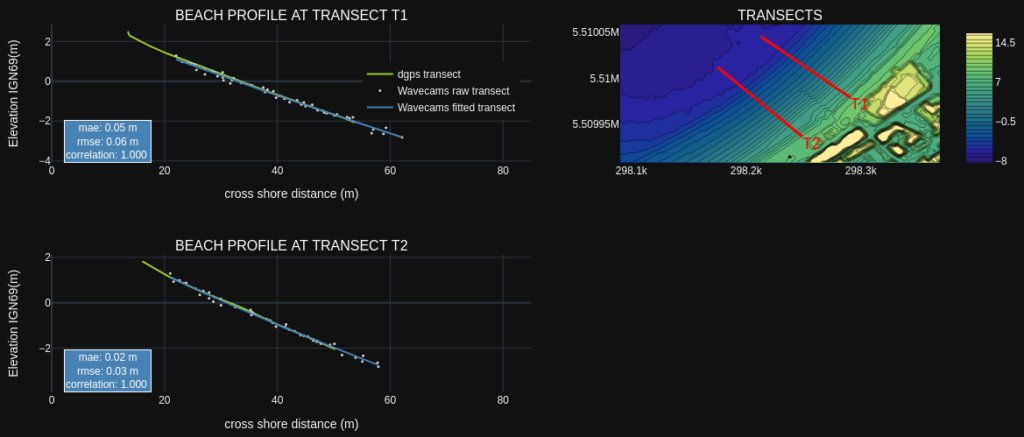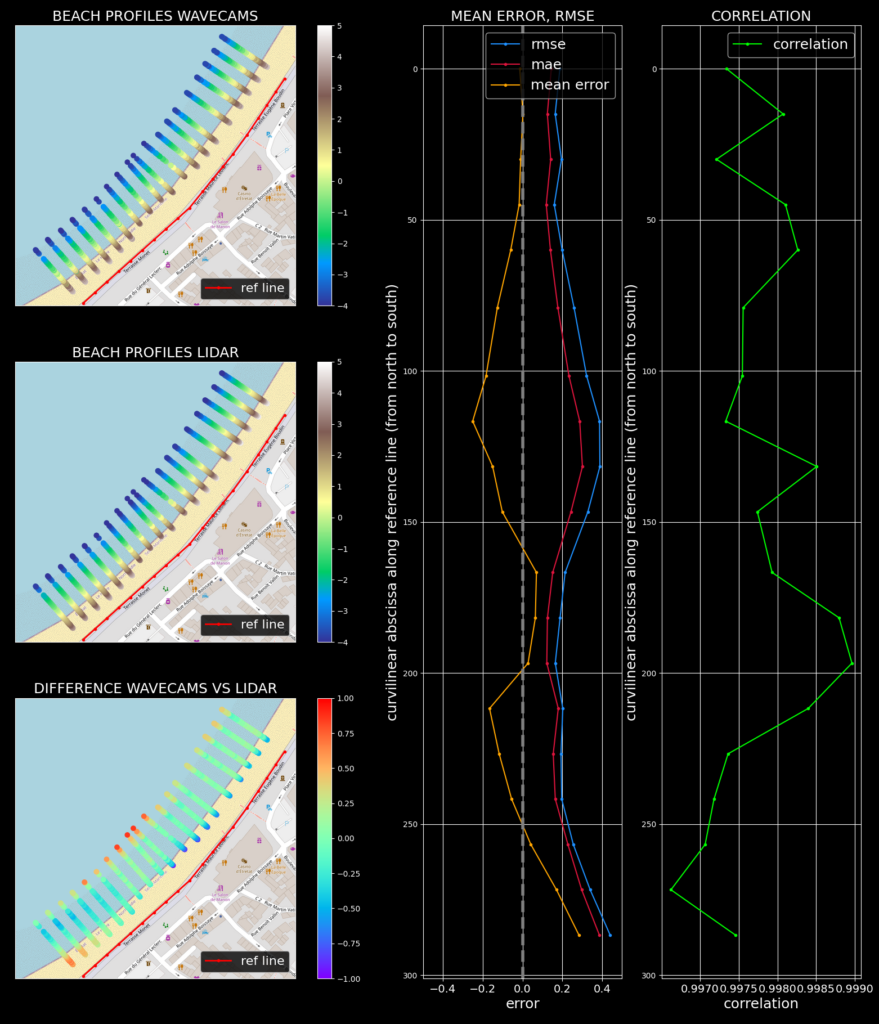Seasonal and intraseasonal variations from the top to the bottom of a beach profile can be considerable. The shape of a beach profile influences greatly its ability to resist to the waves’ attacks. Therefore, this is a crucial morphological parameter to take into account in marine submersion studies.
Wavecams® technology enables a high frequency monitoring of beach profiles from coastline detections. Here is an example in Etretat bay, with beach profiles computed every 10 days from January 2018 to July 2021. Beach profiles vary constantly, and some large modifications happen, specifically during winter storms in 2019 and 2020.
Suivi de pente de plage en partie centrale de la baie d’ Etretat
In order to assess the quality of these beach profiles, they have been compared with Lidar and DGPS data (see the 2 graphs below).
For the validation with Lidar measurements, obtained the 31st of August 2019, the beach profile is computed from coastline positions detected during a period of 10 days (from the 25th of August to the 3rd of September 2019). RMS error is inferior to 15cm.
For the validation with DGPS measurements, obtained the 10th of January 2020, the beach profile is computed from coastline positions detected during a period of 10 days (from the 5th until the 14th of January 2020). RMS error is inferior to 2 cm.




